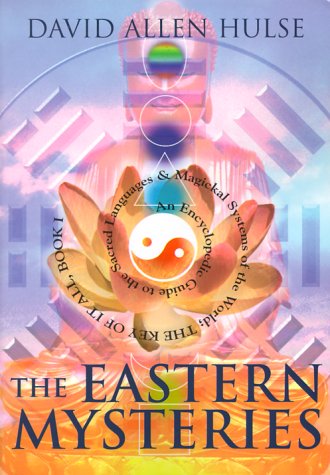
My magnum opus, The Key of it All, is divided into two volumes, The Eastern Mysteries and The Western Mysteries.
These two books are source books, dictionaries, and tutorials over every ancient system of magic, mysticism and philosophy that used numbers and alphabet characters as symbols to convey secret knowledge that is now lost to the world. These books, though highly detailed, are aimed at the novice. Every use of a foreign script is equated to English phonetic equivalents, that eases the reader into uncharted territories of esoteric knowledge. Even though these books were written for the layman, they still contain deep knowledge that has never seen print in English before these books came into being.
* * * * * * * * * * * * *
An example of this can be found in the fourth key of the Eastern Mysteries, Sanskrit. In this chapter, for the first time in print, the Vedic number code known as KA-TA-PA-YA-DHI is shown in great detail. This code gives number value to each consonant in a word, and views each consonant as a separate digit of a composite number. Uniquely to this code, while the consonants have number and place value, the 16 vowels in this language are given no number value at all. Almost all other ancient alphanumeric codes ( i.e., ciphers that give number value to the letters of an alphabet) give values to both consonants and vowels, and use simple addition as a means of giving a total number value to specific sacred words or names. But Sanskrit is the most highly evolved of all codes, and by being digital and positional, is the Queen of alphanumeric ciphers.
When the famous British occult scholar Kenneth Grant attempted to analyze the God names in India as numbers in the late 1970s, he had no knowledge of this pristine code for Sanskrit. So when he attempted to give number value to the Hindu Goddess Kali, who reigns over life and death, he had to revert to the only system he was most familiar with, the Hebrew Qabalah. He lettered Kali as four Hebrew alphabet letters, and represented Kali as K(aph) A(leph) L(amed) Y(od). These four letters have the value in Hebrew of 20+1+30+10. In adding them together Grant felt that Kali should be seen as the symbolic number of 61. He noted that 61 in Hebrew was also the value of the word for the void known as AIN (as 1+10+50). Therefore he connected the destructive mother Kali with the void. However, if Kenneth Grant was aware of the original code for Sanskrit, he would be surprised to find that the Goddess of Death, Kali, is really valued at 13. And 13 is the Tarot key titled Death, a much more appropriate symbolic association for this Goddess. For by this ancient Sanskrit code, Ka Li is formed of two consonants, and Ka=1, while Li=3. Therefore KaLi is really 13, and not 61 as Grant had premised in his own numerical studies of ancient languages.